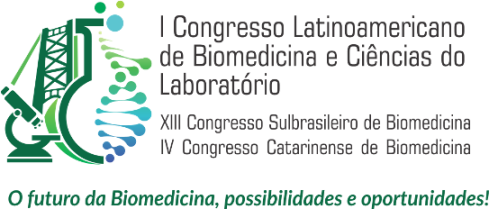Dados do Trabalho
Título
PRIOR NANDROLONE DECANOATE ADMINISTRATION ATTENUATES MITOCHONDRIAL DYSFUNCTION AND CELL DEATH AFTER TRAUMATIC BRAIN INJURY.
Fundamentação/Introdução
INTRODUCTION: Traumatic brain injury (TBI) causes neurodegeneration and cognitive impairment by mechanisms particularly associated with mitochondrial dysfunction and neuroenergetics deficits. Anabolic androgenic steroids (AAS), such as Nandrolone Decanoate (ND), are synthetic hormones derivatives of testosterone used to improve physical ability. Professional athletes are frequently users of AAS and have a high risk of suffering from repeated TBI during their careers. TBI therapy in general is still challenging and there is no specific therapy available to target mitochondrial dysfunction triggered by TBI.
Objetivos
Investigate the effects of ND administration prior to TBI on memory and mitochondrial bioenergetics.
Delineamento e Métodos
METHODS: we performed an experimental study where male 60 days old CF1 mice were treated with ND 15mg/kg or vehicle (VEH) subcutaneously for 19 days. Posterior to treatment, the animals were submitted to a craniotomy followed by a moderate cortical controlled impact, thus being divided into four distinct groups: VEH/SHAM, ND/SHAM, VEH/CCI and ND/CCI. After 48 h rest animals were evaluated for cognitive function through five days Morris Water Maze task (MWM). After that, synaptosomes of the ipsilateral hemisphere were used to analyze mitochondrial metabolism through respirometry, H2O2 production and mitochondrial membrane potential (∆Ѱm). Cellular viability was investigated by MTT assay. Data was analyzed using One Way ANOVA, followed by Tukey post hoc. Statistical significance was considered when p<0.05.
Resultados
RESULTS: CCI impaired spatial memory, increased H2O2 production, disturbed ∆Ѱm formation resulting in decreased cell viability seven days after a moderate TBI. ND administration prior to TBI attenuated the spatial memory deficits, and decreased H2O2 production, ∆Ѱm and sustained cell viability. Remarkably.
Conclusões/Considerações Finais
CONCLUSION: ND seems to exert a preventive benefit to brain mitochondrial neuroenergetics function and cell survival in mice submitted to TBI. In our concept, our data highlights the potential relevance of AAS as neuroprotective agents for TBI therapy.
Referências
1.Blennow K, Hardy J, & Zetterberg H (2012). 76(5), 886-899. doi: 10.1016/j.neuron.2012.11.021.
2.Rosenfeld, JV, Maas AI, Bragge, et al (2012). Lancet, 380(9847), 1088-1098. doi: 10.1016/S0140-6736(12)60864-2.
3.Levin HS, & Diaz-Arrastia RR (2015). Lancet Neurol, 14(5), 506-517. doi: 10.1016/s1474-4422(15)00002-2.
4.Meaney DF, Morrison B, & Dale Bass C (2014). J Biomech Eng, 136(2), 021008. doi: 10.1115/1.4026364.
5.Dash PK, Zhao J, Hergenroeder G, & Moore AN (2010). Neurotherapeutics, 7(1), 100-114. doi: 10.1016/j.nurt.2009.10.019.
6.Roozenbeek B, Maas AI, & Menon DK (2013). Nat Rev Neurol, 9(4), 231-236. doi: 10.1038/nrneurol.2013.22.
7.Hoozemans JJM, van Haastert ES, Nijholt DAT, et al (2009). Am J Pathol. 174:1241–51. doi: 10.2353/ajpath.2009.080814.
8.Walter P, & Ron D (2011). Science, 334, 1081–1086. doi: 10.1126/science.1209038.
9.Ferreiro E, Pereira CM (2012). J Pathol, 226(5):687–692. doi: 10.1002/path.3977.
10.Ho YS, Yang X, Lau JC, et al (2012). J Alzheimers, 28: 839-854. doi: 10.3233/JAD-2011-111037.
11.Fu ZQ, Yang Y, Song J, et al (2010). J Alzheimers Dis, 21:1107–1117. PMID: 21504119.
12.Saito T, Konno T, Hosokawa T et al (2007). J Neurochem, 102:133–140. doi: 10.1111/j.1471-4159.2007.04540.x
13.Begum G, Yan HQ, Li L, et al (2014). J Neurosci, 34:3743–3755. doi: 10.1523/JNEUROSCI.2872-13.2014.
14.Harvey LD, Yin Y, Attarwala IY, et al (2015). ASN Neuro, 18;7(6). doi: 10.1177/1759091415618969.
15.Malhotra JD, Kaufman RJ (2011). Cold Spring Harb Perspective Biol. 1;3(9):a004424. doi: 10.1101/cshperspect.a004424.
16.Yesalis CE (2001). AIDS Read, 11(3), 157-160. PMID: 17004353
17.Pomara C, Neri M, Bello S, et al (2015). Current Neuropharmacology, 13(1), 132-145. doi: 10.2174/1570159X13666141210221434.
18.Saha B, Rajadhyaksha GC & Ray SK (2009). J Indian Med Assoc, 107(5), 295-299. PMID:19886384.
19.Le Greves P, Huang W, Johansson P, et al (1997). Neurosci Lett, 226(1), 61-64. PMID:9153642.
20.Kalinine E, Zimmer ER, Zenki KC, et al (2014). Horm Behav, 66(2), 383-392. doi: 10.1016/j.yhbeh.2014.06.005.
21.Jia W, Loria RM, Park MA, et al (2010). Int. J. Biochem. Cell Biol. 42(12):2019-29. doi: 10.1016/j.biocel.2010.09.003.
22.Nguyen TV, Jayaraman A, Quaqlino A & Pike CJ (2010). J. Neuroendocrinol. 22(9):1013-22. doi: 10.1111/j.1365-2826.2010.02044.x.
23.Kalinine, E. Efeitos comportamentais, neuroquimicos e metabólicos do tratamento com decanoato de nandrolona em camundongos. 2011, 68f. Dissertação (Mestrado em PPG-Ciéncias Biológicas-Bioquímica) – Departamento de Bioquímica, ICBS, Universidade Federal do Rio Grande do Sul, Porto Alegre, RS, 2011.
24.Dixon, C. E., Clifton, G. L., Lighthall, J. W., Yaghmai, A. A., & Hayes, R. L. (1991). A controlled cortical impact model of traumatic brain injury in the rat. J Neurosci Methods, 39(3), 253-262.
25.Smith, D. H., Soares, H. D., Pierce, J. S., Perlman, K. G., Saatman, K. E., Meaney, D. F., . . . McIntosh, T. K. (1995). A model of parasagittal controlled cortical impact in the mouse: cognitive and histopathologic effects. J Neurotrauma, 12(2), 169-178. doi: 10.1089/neu.1995.12.169.
26.Statler, K. D., Alexander, H., Vagni, V., Dixon, C. E., Clark, R. S., Jenkins, L., & Kochanek, P. M. (2006). Comparison of seven anesthetic agents on outcome after experimental traumatic brain injury in adult, male rats. J Neurotrauma, 23(1), 97-108. doi: 10.1089/neu.2006.23.97.
27.Zohar, O., Getslev, V., Miller, A. L., Schreiber, S., & Pick, C. G. (2006). Morphine protects for head trauma induced cognitive deficits in mice. Neurosci Lett, 394(3), 239-242. doi: 10.1016/j.neulet.2005.10.099.
28.Bevins, R. A., & Besheer, J. (2006). Object recognition in rats and mice: a one-trial non-matching-to-sample learning task to study 'recognition memory'. Nat Protoc, 1(3), 1306-1311. doi: 10.1038/nprot.2006.205.
29.Muller, A.P., Gnoatto, J., Moreira, J.D., Zimmer, E.R., Haas, C.B., Lulhier, F., Perry, M.L., Souza, D.O., Torres-Aleman, I., Portela, L.V., 2011. Exercise increases insulin signaling in the hippocampus: physiological effects and pharmacological impact of intracerebroventricular insulin administration in mice. Hippocampus 21, 1082-1092.
30.Gnaiger E. Mitochondrial pathways and respiratory control. An introduction to OXPHOS analysis. 4th ed, ed. M.P. Network. 2014, Innsbruck: OROBOROS MiPNet Publications. 80.
31.Mosmann, T. Rapid colorimetric assay for cellular growth and survival: application to proliferation and cytotoxicity assays. J. Immunol. Methods 65, 55–63 (1983).
Palavras-chave
KEY WORDS: Traumatic Brain Injury, Anabolic Androgen Steroids, Cognition, Mitochondrial Function
Área
Tema livre
Autores
Pedro Henrique Rosa, Randhall Bruce Carteri, Afonso Kopczynski de Carvalho, Monia Sartor, Nathan Ryzewski strogulski, Marcelo Salimen Rodolphi
